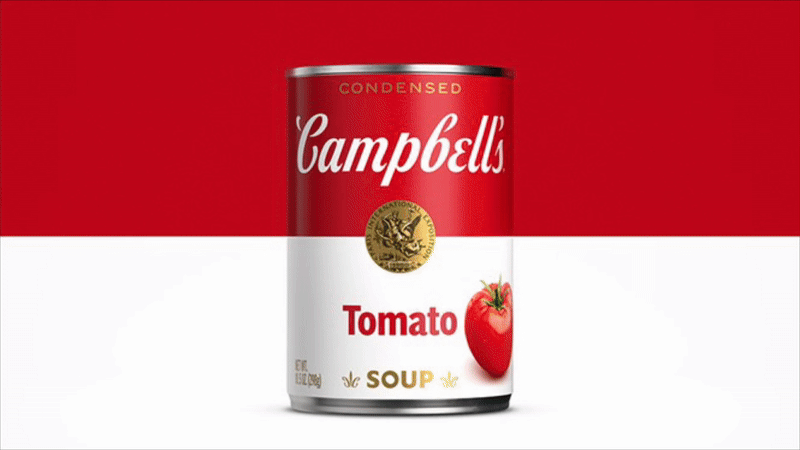How to More Accurately Judge a Food Label By Its Cover
Confessions of a Former Fortune-500 Package Designer
A turnaround of the Campbell’s Tomato Soup label, whose 2021 redesign preserves the iconic look that Andy Warhol immortalized in 1962.
“Once you ‘got’ Pop, you could never see a sign again the same way again. And once you thought Pop, you could never see America the same way again.”
The Illusion of Choice Demystified
What My Package Design Pedigree Taught Me
My time as a package designer for some of the most visible brands in human history made it impossible to ever look at a product label the same way again — especially those on food and beverage shelves. As a lead designer handling creative, brand strategy, and other forms of professional “pixel pushing” for companies like Coca-Cola, Oreo, Visa, Google, Samsung, and more, I learned one crucial lesson: you can’t truly judge a package by its cover, because most labels don’t tell the full story of what’s inside.
In the U.S., much of the regulatory structure intended to prevent false or misleading advertising was significantly weakened in the 1980s when former TV star Ronald Reagan prioritized deregulation to foster free-market growth during his presidency. While his administration specifically relaxed rules on broadcast advertising, this president set a clear precedent that would have a lasting impact on policy and political ideology. This shift marked a sociopolitical and cultural turning point, reshaping the balance between corporate power and consumer protections. For deeper explorations of this trajectory, see Naomi Klein’s No Logo book and documentary.
From Naomi Klein’s landmark book, the No Logo documentary shows how the rise of global brands has impacted workers, consumers, and communities worldwide.
Although laws like the Federal Trade Commission Act technically prohibit false advertising, enforcement has been steadily undermined by weakened oversight, aggressive corporate lobbying, and industry run, “self-regulatory” bodies that reliably protect profits over people. Meanwhile, marketers have grown increasingly adept at exploiting vague language and legal loopholes, blurring the line between honest communication and manipulative persuasion. The result is an environment where sophisticated marketing methods — from visual hierarchies to deceptive brand messaging and exaggerated claims — make it nearly impossible for well-meaning consumers to make informed, health-conscious choices.
Today, in a legal landscape where corporations often enjoy more rights and protections than consumers, discerning the safe from suspect products on store shelves has become a herculean task. With the perspective of an industry insider, I feel compelled — even morally obligated — to call out the pervasive tactics that prioritize corporate deceptions over the transparent communications that truly serve and protect the greater interests of the collective wellbeing.
This article is dedicated to those I once unwittingly helped corporate powerhouses to exploit — my peers, fellow parents, health-conscious individuals, and those already burdened by health challenges — who deserve to see beyond the well-designed deceptions that saturate our global product marketplaces. My mission is to improve the collective quality of life and empower people to pursue true health and prosperity — helping to prevent unnecessary suffering, reduce the prevalence of chronic illness, and combat the kind of systemic dis-ease that holds humanity back from reaching its full potential.
By equipping everyday people with the knowledge and insights they need to source the safest, highest-quality, most biocompatible foods, I likewise help to shape a future in which the most honest and ethical brands will thrive while the cost-cutting, harm-inducing, and shamelessly profiteering enterprises fall by the wayside.
Coming Soon
This piece is still evolving — thank you for your patience! If you’d like to be the first to know when it goes live, subscribe to CHANNEL ONE for updates on upcoming releases.

